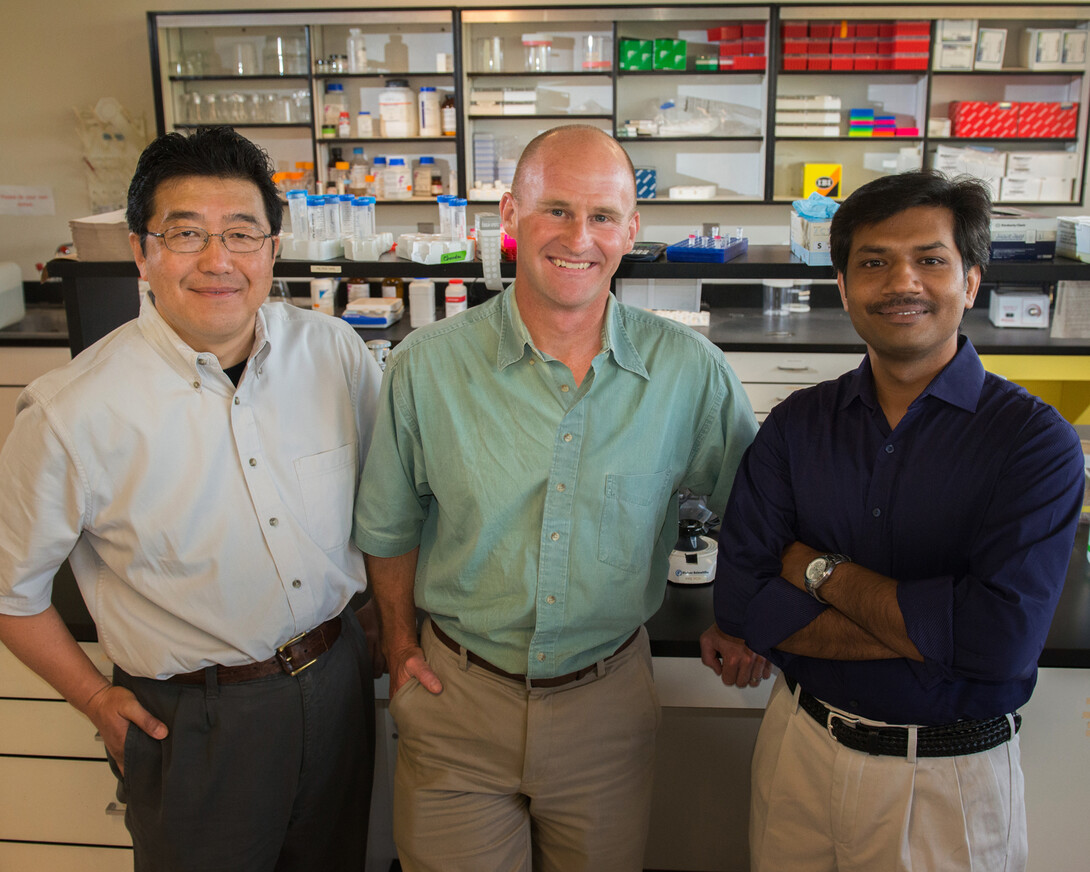
A UNL research team led by evolutionary geneticist Jay Storz has received a $1.4 million grant from the National Institutes of Health for continued research into mechanisms of protein evolution.
The team is using an approach called “protein engineering” to trace mutational pathways of hemoglobin evolution in vertebrates. The goal is to identify mutations that are responsible for evolved changes in protein function and to assess whether pathways of molecular evolution are to some degree predictable.
Other members of the UNL team include associate professor Hideaki Moriyama, a co-investigator on the grant; and senior research associate Chandrasekhar Natarajan, both of whom are in the School of Biological Sciences with Storz. The research also involves a close collaboration with researchers at Aarhus University in Denmark.
Hemoglobin is the respiratory protein that is responsible for transporting oxygen through the circulatory system. It is also responsible for blood’s scarlet red color – and is therefore an especially appropriate protein for research at UNL. Storz’s lab has had NIH funding since 2008 to examine evolved changes in hemoglobin function in animals that have adapted to low-oxygen conditions at high altitude.
The newly funded NIH project involves reconstructing ancestral proteins and then tracing all possible mutational pathways that connect a given ancestral protein with the modern-day protein that has evolved novel functional properties. The team uses genetic engineering technologies to introduce mutations into the hemoglobin protein one at a time, enabling them to probe the functional effects of specific changes in protein structure.
“The main goal is to address basic questions about whether evolution is more likely to follow some pathways rather than others,” Storz said. “If natural selection favors the evolution of a particular protein function, can that function evolve via any given mutational pathway from any given ancestral starting point? Or are some pathways inaccessible to natural selection, so that evolution is constrained to follow a restricted subset of all possible pathways?
“This experimental system allows us to address very fundamental questions about the inherent repeatability and predictability of evolutionary change.”
Storz said the research is also yielding results that are highly to new technologies in transfusion medicine. There is much interest in the development of recombinant hemoglobins with specifically tailored functional properties for use in synthetic blood substitutes. Storz said that the design of such hemoglobin-based oxygen-carriers would benefit from insights into the time-tested designs that have been crafted in evolution’s workshop.
The grant was awarded Aug. 1 by the NIH’s Heart, Lung and Blood Institute. The award number is 2 R01 HL087216-06A1.







